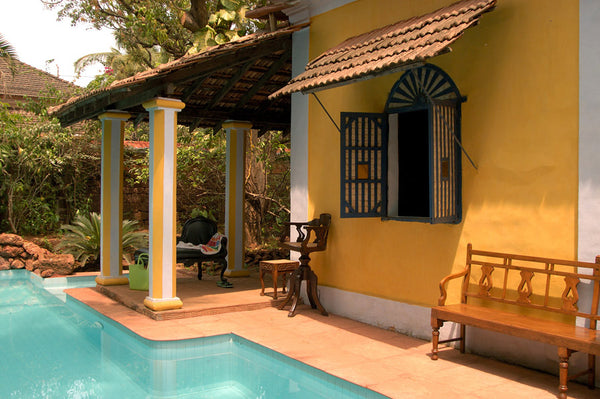Designer Wendell Rodricks has started work on turning his home into a museum of Goan sartorial traditions Fashion designer Wendell Rodricks is alarmingly unattached to his magically begotten and lovingly dressed heritage home in the village of Colvale in Goa. The bungalow is in the process of being converted into a museum of Goan costume.
"I feel no remorse," he says. "It's a place with such happy energies. I want to give it back to Goa; it will be my contribution to Colvale."

This is his ancestral village; of which the Rodricks are 'gaonkars' -the first people who settled and started a village. "If I dig deep enough in the church records, I can find my family's Hindu names before they converted," he says. "Living in my village truly gives me a sense of connect. From my people, I learn the native wisdom I have lost -like you have to warm up mango blossoms in winters so that you can have fruit in the winters."
Rodricks is sitting in the veranda that extends at the back of his house. This is the centre of his family life with partner Jerome Marrel, their four dogs, and three cats. The small table by the pool is at different times of the day a breakfast table, the morning office and dinner area. As the sun sets and Rodricks returns from his passoi (daily evening walk in the village or to the hill close by), candles light up the area. They don't use electricity in this part of the house at night.
Four-hundred-and-fifty-year-old Casa Dona Maria is a cultural landmark in the fashion world, almost as famous as its inhabitant. Rodricks bought it for the price of a city SUV in 1993 and named it after the mother-in-law of Olinda Braganza, the lady who sold it to him. He bought the brick-and-mortar structure sitting on half-an-acre of land but inherited the 200-year-old mango trees that yield almost every variety of the fruit grown in the state.
By December 2018, Casa Dona Maria will, all Goan gods willing, become Moda Goa -a museum of Goan costume and clothing. Rodricks is on the phone right now, arranging for the money to buy a vintage silver buckle and brooch from a family.It's the price of a Sabyasachi lehenga. "We searched for modern buildings that didn't have the problems of an old structure, but found that houses in Panjim were too close to the river and the water tends to rise up through the laterite stone," says the 56-yearold designer. Meanwhile, Rodricks got an offer to part with Casa Dona Maria for $3 million.
The buyer most likely had a boutique hotel in mind. But Rodricks remembered his promise to its previous owner, that he would never break down the house and only make alterations to enhance it. So, for the museum, the windows will be sealed, the rooms will be climate-controlled to save the artefacts from humidity and special cases are being brought in for the precious pieces.

The idea of a museum for Goan costume came to Rodricks while working on the book, Moda Goa, about costumes of Goa. And instead of building a new a modern structure, Rodricks decided to move into a rented home two minutes away, and turn Casa Dona Maria into a museum.In fact, the index of the book will form the structure of the museum too.
The decision could have been influenced by the excitement of two new design projects -one is changing the Dona Maria from a residence to a commercial space; the second to turn the rental home into a Rodricks-appropriate residence.
"I want the museum to run on the American business style model, like the Metropolitan museum (in New York City)," says Rodricks, who has been collecting books for the museum archives since 2010. "I want visitors to spend two, two-and-a-half hours wandering around, and finishing the tour with my mother's prawn curry and rice in the cafeteria. There will also be a photographic archive and library for students who want to research Goan history and clothing. I want it to come alive as a place of learning. Instead of plaques, I want information to be received in the way I am telling you know, like a story. So the curator will be trained to do that. I could helm tours if I am around or if there's a VIP group." The process has already begun to empty the rooms. Rodricks's self-admittedly has the largest collection of contemporary Goan art, and pieces like the Chaitali Morajkar painting, above his desk in the Opium Room, and the furniture in the salon have already been shortlisted for sale to fund the museum trust. Funds for the museum trust are also beings raised by liquidating their real estate assets in Panaji.



0 comments